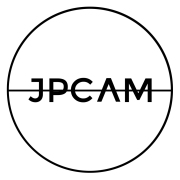▶ DIGC202 GLOBAL NETWORKS

What really was the first means of communication, and how did it advance to what we have today?
Today we live in a world where messages are sent and received by just a single tap, while back in the 19th century one tap was equivalent to only one word. Ever since the creation of the telegraph, the world has experienced multiple shifts in perception — from the telegraph all the way up to now where we have the smart phone. Just from the way that a cellphone works, telegraphs are the foundation of how the concept of point A travels to point B in which point B is at the receiver end whilst point A is the sender (Fisher, 2019) ; the only main difference is the efficiency of the message travelling to each of those points.
In order for a message to be sent and received from point to point, there has to be a network. The way that a network functions is pretty simple, in every network there are communication end points and redistribution points (we can call them nodes) these nodes are used to create, distribute and receive information to one another.
Try and picture our body’s nervous system:

We basically have nodes all over inside our bodies! They’re just called nerves but they serve a similar function that is to distribute and receive information, once there’s a node missing or malfunctioning, the information or message wouldn’t be transmitted properly or maybe even at all.
I know that it is just the first week of classes but I already learned so much in just a span of 3 days. Finding out the original way of communication was incredibly mind blowing — now I know that sounds like I’m over-exaggerating and as if I’m just trying to suck up to our professors (I’m not… I really enjoy the class!). I also never knew the concept of a network and what it’s built up on, the fact that in today’s generation we still use the same concept without even realising! When I found out that having the same interests and hobbies as a person or even a group of people just means that we are all in one network, and once we’re in that network; time and the ‘real world’ is irrelevant!
References:
- Sterling, B. (1993, February). A Short History of the Internet. The Magazine of Fantasy and Science Fiction. Retrieved from http://sodacity.net/system/files/Bruce_Sterling_A_Short_History_of_the_Internet.pdf
- Stalder, F. (2005). Open Cultures and the Nature of Networks. Retrieved from http://felix.openflows.com/pdf/Notebook_eng.pdf
- History.com Editors. (2009, November 9). Morse Code & the Telegraph. Retrieved from https://www.history.com/topics/inventions/telegraph
- Fisher, T. (2019, July 2). Network Nodes Are Physical Devices on a Computer Network. Retrieved from https://www.lifewire.com/what-is-a-node-4155598

Appreciation to my father who informed me regarding this webpage,
this blog is in fact remarkable.
LikeLike
Well said! This blog is great that you mentioned the original way of communication. Finding out it was definitely awesome! Since nodes were so important of our body, idea or message wouldn’t be delivered, if there was one node missing.
LikeLike
So in a network, does the information passed around lose its value like art for example?
LikeLike
Yes of course, because then the importance of the information won’t be prioritised.
LikeLike
First of all I love the meme at the top of your blog! Its really creative and funny too!
Also, reading your blog has definitely made me realise how grateful we are to have such advance devices in our hands without having to go through the struggle of living without any means of technology! Truly an amazing time to be alive!
LikeLike
It is an interesting blog! I think it is changing the spiritual interaction type between people. Do you think so? haha
LikeLike
Yes, I definitely think so!
LikeLike